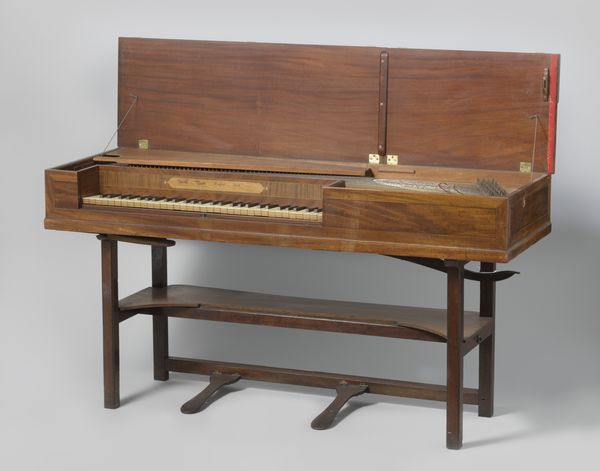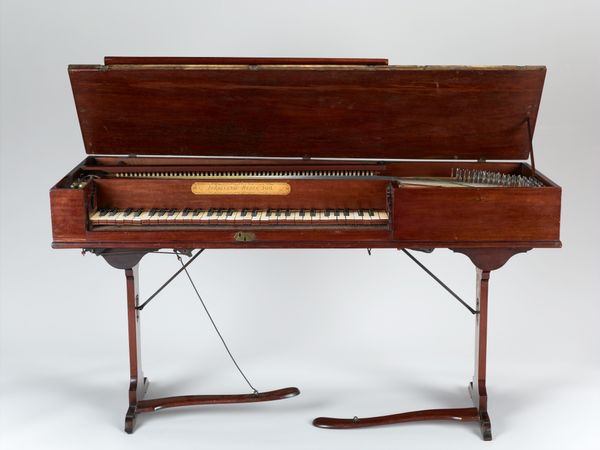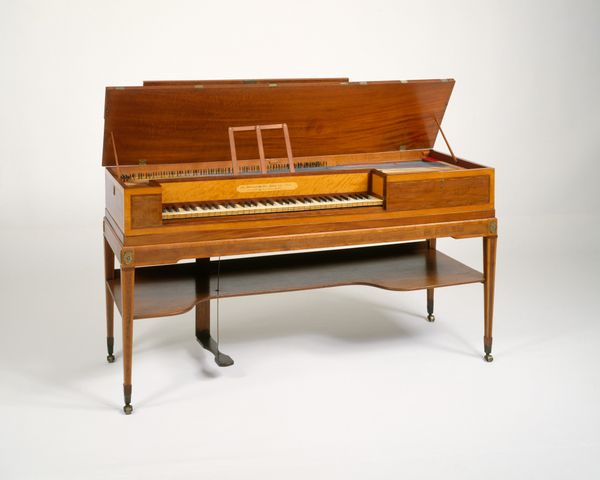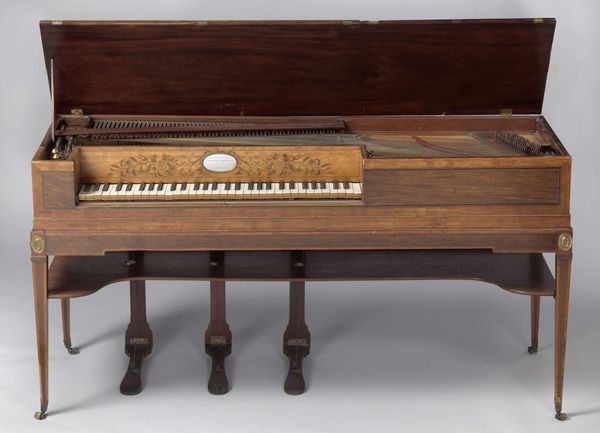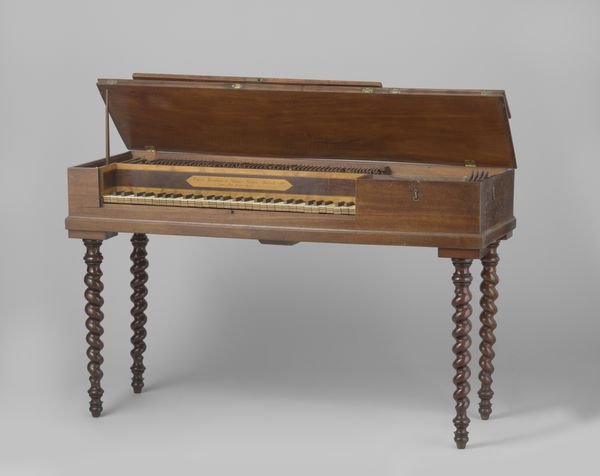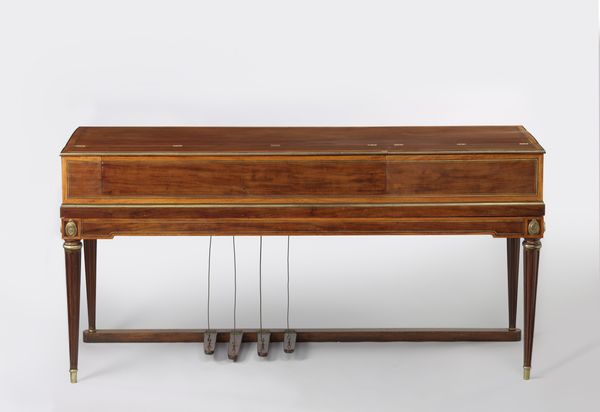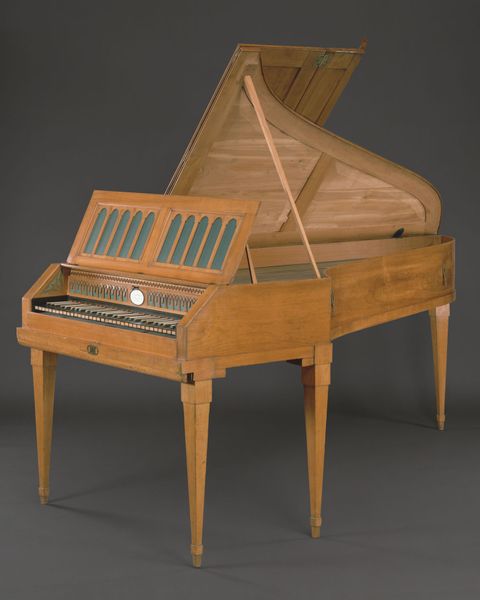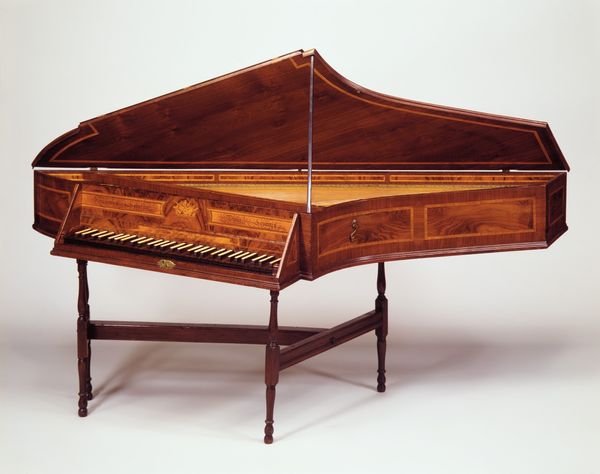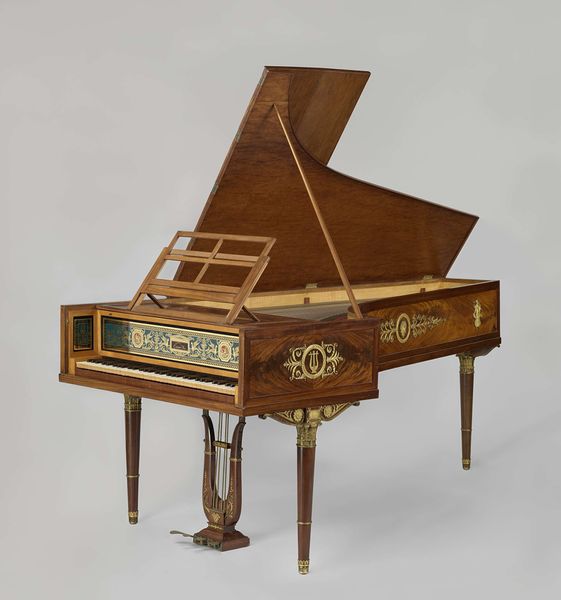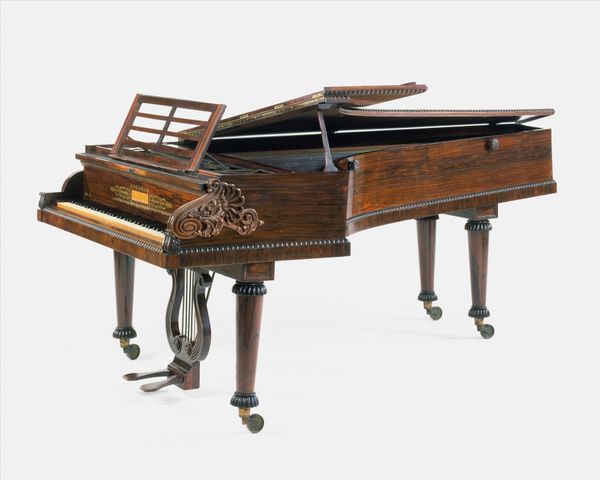
metal, wood
#
neoclacissism
#
metal
#
wood
#
musical-instrument
Dimensions: width 84 cm, height 167 cm, depth 59 cm, weight kg
Copyright: Rijks Museum: Open Domain
Curator: Before us stands a square piano crafted by P. Fabritius in 1808, a fascinating artifact where Neoclassical aesthetics meet musical innovation. The primary materials appear to be wood and metal, reflecting the craftsmanship of the period. Editor: Immediately, I’m struck by its air of delicate refinement. The slim, tapered legs and warm wood tones give it an almost regal, yet understated presence. Curator: Precisely. The Neoclassical influence is unmistakable in the piano's symmetrical design and the clean lines. Consider how this reflects a broader societal shift towards order and reason, influencing art, architecture, and, of course, musical instrument design. The square piano emerged as a popular instrument in domestic settings, becoming symbolic of refinement and cultural status among the upper and middle classes. Editor: It’s interesting how musical instruments themselves become gendered objects within these domestic spaces. The piano often featured as a signifier of femininity and accomplishment, its presence intrinsically linked to women's roles in the early 19th century. Do you think its association with domestic life might reflect constraints of gender during this era? Curator: Without a doubt. In terms of symbolism, a musical instrument within a home might convey that family's cultivation and dedication to the arts, embodying leisure, taste, and status. Editor: And perhaps hidden expectations of propriety and performance too. Even the piano's design choices might invite speculation; for example, the inclusion of specific embellishments possibly conveying underlying political allegiances and complex family narratives. Curator: Absolutely, and these material choices also point to a specific aesthetic: it's very controlled, favoring subtle visual and tonal harmonies over extravagance. Editor: Looking at this Fabritius piano today, I find it compelling to consider the music it once produced. And how that music might either reinforce prevailing norms, or become a conduit for hidden forms of dissent or self-expression for women especially. Curator: A poignant point to end on. This square piano does offer much to think about, not merely as a Neoclassical musical instrument, but as an enduring symbol laden with both its era's ambitions and repressions. Editor: Indeed, understanding how the music intersects with societal pressures—adds crucial layers to our historical perception. Thank you.
Comments
No comments
Be the first to comment and join the conversation on the ultimate creative platform.
